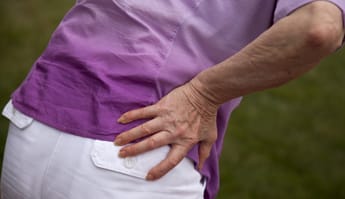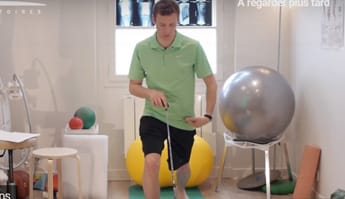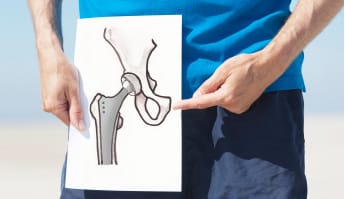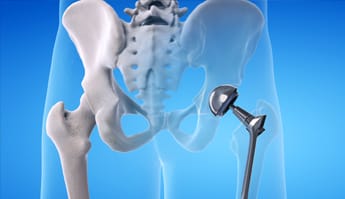Understanding hip Osteoarthritis

Hip osteoarthritis, also called coxarthrosis, is characterised by premature changes in the cartilage of the hip joint, located between the femur and the pelvis. This gradual cartilage damage is caused by increased and sustained pressure on the hip joint structures, and in the long-term it leads to more or less severe pain, depending on the stage of the damage. It is known as primary hip osteoarthritis where the joint involvement has no traumatic or anatomical cause. It is said to be "secondary” where it results from an underlying disease or is caused by congenital or acquired malformation.
In addition to natural ageing which causes joint changes, some risk factors increase the potential for onset of hip osteoarthritis, among which excess weight, family history, carrying heavy loads or even injury. Therefore, sprains or fractures, especially, can considerably weaken a joint, even if, in most cases, the first signs of osteoarthritis damage only appear years later.
Diagnosing and treating hip osteoarthritis
The symptoms of hip osteoarthritis

Coxarthrosis, or hip osteoarthritis, mainly involves pain caused by gradual damage to the joint. See the other symptoms likely to arise in this specific case of this osteoarthritis.
Hip osteoarthritis: taking good care of your joints

Physical activity plays an essential role in the fight against hip osteoarthritis. In addition to preserving joint flexibility for longer, exercising also helps slow cartilage erosion. Here are videos to show you the right exercises to do at home.
Which drugs can be used to treat hip osteoarthritis?

The medical treatments recommended to treat hip osteoarthritis mainly include two major therapeutic areas, that are relieving pain and slowing the process of joint damage.
How to treat hip osteoarthritis with a joint prosthesis?

Hip replacement, whether partial or total, is generally recommended where the medical treatment is ineffective or the joint is too badly damaged to enable walking.
Living with hip osteoarthritis : tips for daily living
Preserving good quality-of-life when you have hip osteoarthritis is not always easy. In addition to the pain experienced, numerous patients suffer from social isolation in which the disease imprisons them gradually and this has an effect on their mental health. Solutions are available. Regular physical activity is one of them. Diet is also especially important when you have osteoarthritis. However, the most important of all, is to not think you are alone with your disease.







